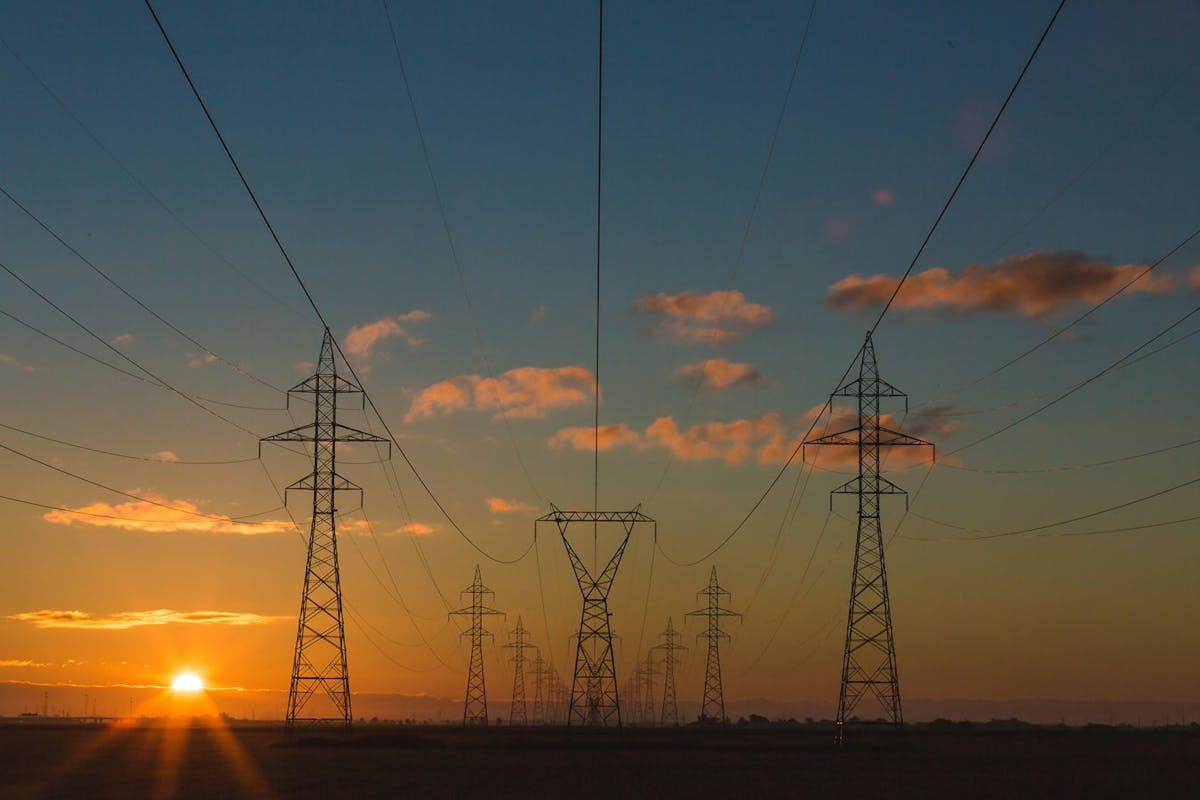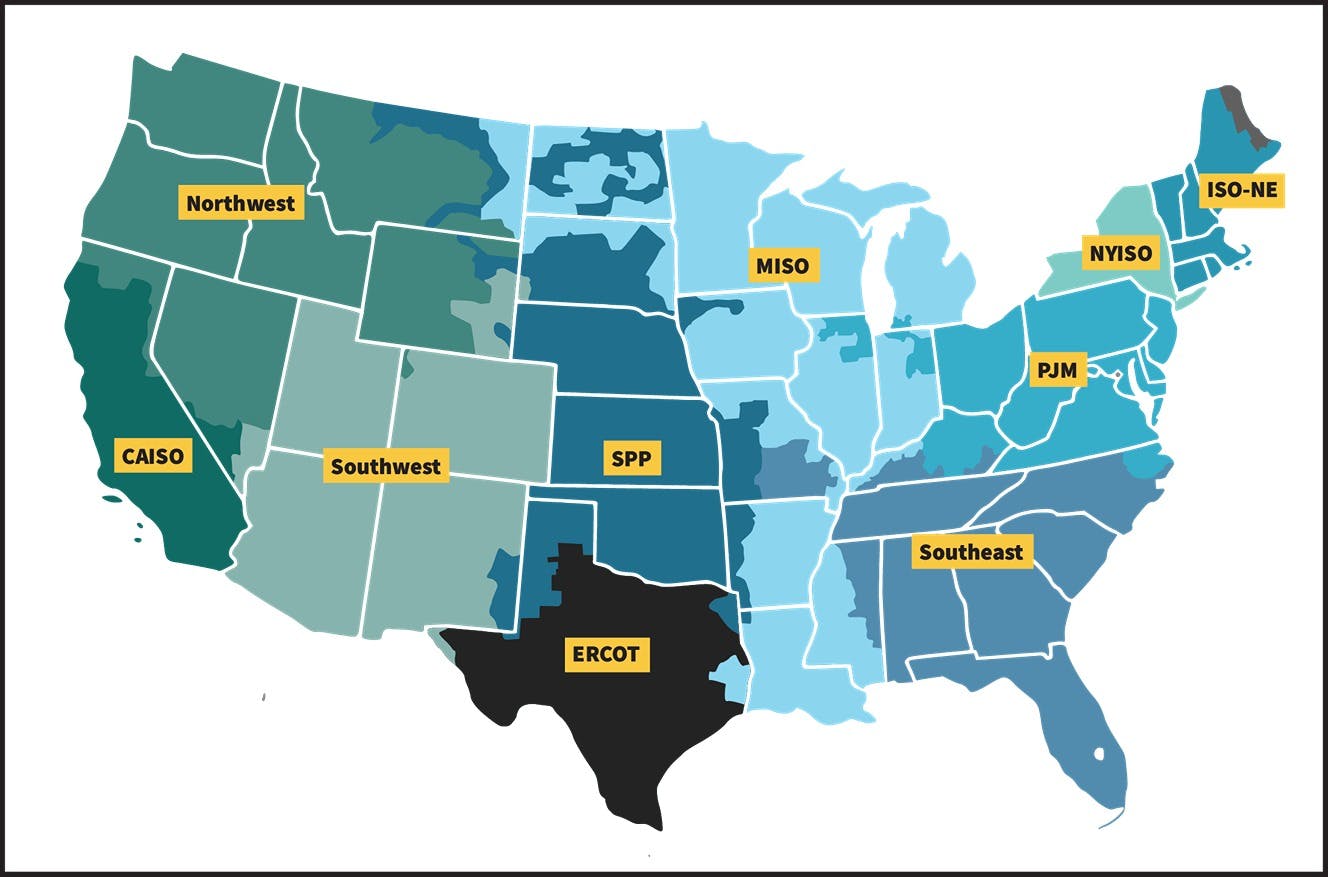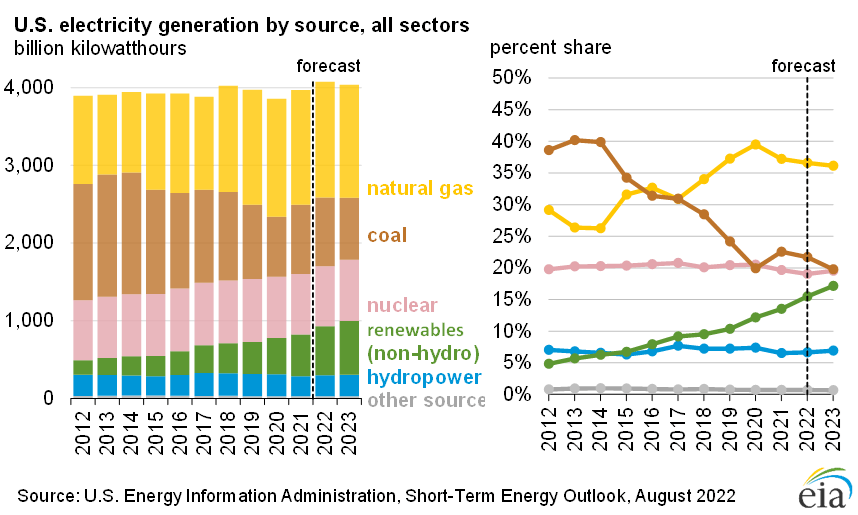What Is The Grid?
Last edited

Author
Andrew Blok
Electrification and Solar Writer and Editor

Editor
Andrew Giermak
Solar and Electrification Writer and Editor

For something as important to modern life as the grid, we think about it very little. The network of power plants, transmission lines, electric meters, and other equipment that delivers electricity around the country (and sometimes across borders), enables in some way or another, most modern conveniences.
One time we’re bound to take notice is when something goes wrong, like a power outage or wildfire caused by a tree falling on a power line, or a blackout thanks to mismatched supply and demand. But a better understanding of the grid can help you understand how your home uses energy, how you can save, and how you can reduce your reliance on the grid with home solar panels.
See how much you can save with home energy changes
What Is the Grid?
The grid is a massive, interconnected network of electrical transmission equipment that creates and supplies new electricity to end consumers. Also known as the electric grid, electrical grid, electricity grid, or power grid, the national grid supplies electricity to users in homes, commercial buildings, and large industrial operations alike.
Where Is the Grid?
The grid is everywhere!
Here in the United States, the North American power transmission grid stretches across the entire country, from Alaska to Maine to Florida to California, and beyond.
The national grid is made up of several regional grids that have been interconnected to form a network in the United States, Canada, and parts of Mexico.

Why Do We Need the Electrical Grid?
If you’ve ever plugged something into an electrical outlet at home, then you know exactly why we need the electrical grid. From cell phones to kitchen appliances and even air conditioners and heat pumps, electricity is a necessity of modern life. And electricity is in even more places than ever before. The rise of electric vehicles, heat pumps, and even induction stoves at home, and the increase in data centers and AI processing requires more electricity than previous decades.
Safe and reliable delivery is more important than ever before, and getting even more so.
Who Manages and Maintains the Electricity Grid?
Serving over 100 million customers, the national power grid is managed and maintained by over 500 private and public entities across the US. While the federal government owns and operates many public facilities, the majority of power generated and distributed through the electrical grid is owned by privately-owned, investor-led, or cooperative utilities.
To keep the grid running efficiently, regional transmission organizations (RTOs) and independent system operators (ISOs) are responsible for overseeing electrical activity, developing plans, and implementing emergency procedures. While the federal government regulates interstate electricity distribution systems through the Federal Energy Regulatory Commission, state and local grid operations are typically controlled by public utility commissions or electricity reliability companies.
How the Power Grid Works
Despite all of its complexities, the essential operations of the energy grid can be broken down into three simple steps: generation, transmission, and distribution. While the shape of the modern power grid is being transformed by new sources of energy, the primary function of an interconnected grid to share resources between connected electricity users will always remain the same.
Electricity generation to the grid
For electricity to enter the grid, it must first be generated. In 2023 (the most recent available data), power was created in many different forms at various capacities.
According to the US Energy Information Administration, about 43% of US electricity came from natural gas, and another 16% from coal. About 19% came from nuclear power while another 21% came from renewables: 10% from wind, 6% from hydropower, and another 4% from solar.
| Source | Percentage |
|---|---|
| Natural gas | 43.10% |
| Coal | 16.20% |
| Petroleum | 0.40% |
| Nuclear | 18.60% |
| Wind | 10.20% |
| Hydropower | 5.70% |
| Solar | 3.90% |
| Biomass | 1.10% |
| Geothermal | 0.40% |
Source: US EIA

Power plants: Power plants create what is called large-scale or utility-scale volumes of electricity. Although your mind may be automatically imagining large concrete towers emitting dark gray smog, power plants come in many shapes and sizes.
Beyond the coal-fired and natural gas-fired facilities commonly associated with the term power plant, massive amounts of electricity are also generated daily with hydroelectric dams, in multi-megawatt solar farms, over rolling hills dotted with wind turbines, and in nuclear reactors around the country.
Distributed generation: Distributed or dispersed electricity generation, also known as small-scale power production, is a growing contributor to the grid’s supply of electricity. Instead of large power plants, the goal of distributed electricity production is to use many smaller points of generation to create and use new power as close to its original source as possible.
Today, it is easier than ever for homeowners and businesses to generate their own electricity that can also be safely fed into the grid through solar panels and utility interconnection. The relative ease with which residential solar panels connect to the grid — though if you’re waiting for it, or your interconnection is delayed it can feel like a long time — is one benefit of small-distributed solar, compared to larger power plants.
Electricity transmission across the grid
After grid power is produced, it must be delivered to where it’s needed. Here, new batches of bulk energy are transmitted to smaller substations through transformers that modify the electricity so it can travel over long distances and at high voltages. Think of these transmission lines as the trunk of the tree that is the North American electric grid.
Transmission lines are very thick and typically supported by large metal towers. Critically, they are bi-directional, which allows for the energy to be transported back and forth. While they are easy to spot when installed overhead, many electrical transmission lines are also safely buried underground.
Electricity distribution from the grid
Finally, after reaching a local substation and passing through a switch tower, grid energy is then distributed to end users through smaller electrical power lines. Distribution lines move electricity at lower voltages through thinner wires and are more likely to be supported by wooden poles.
In the final stage of the energy supply chain, the electricity distributed to a home or business is recorded by the property’s electrical meter. It measures how much electricity the end user consumes so the utility can send them an electricity bill.
See how much you can save with home energy changes
Off-Grid Power and Microgrids
Of course, electricity can be created and used outside of the national power grid. From small, handheld devices to generator-backed facilities, people can also power their lives off of the grid with battery storage and solar panels, or a gas or solar generator.
Small communities, medical campuses, and other organizations are now creating what are known as microgrids, which can create, store, and continuously use electricity independently of the national grid. Designed to be self-sufficient, microgrids are interconnected with the electrical grid, but able to disconnect from neighboring infrastructure to remain online in the event of an electrical outage nearby. A home with solar panels and a backup battery can act as a little microgrid all to itself, powering itself with solar panels during the day and relying on battery power at night.
Microgrids can be used to support singular households or entire neighborhoods when local grid power is unavailable throughout power outages and emergency scenarios. Though microgrids can be powered by a backup generator, many are turning to solar and battery storage, which can provide cost savings and other benefits even when the grid is up and running as normal.
The Grid and Solar Energy
Understanding the basic relationship of how solar and the grid work together is critical when installing a personal energy system. While some people fear that widespread adoption of rooftop solar could damage the grid, solar power, especially when paired with battery storage, has been proven to reduce grid stress, smooth energy demand curves, and lower the cost of upgrades and maintenance associated with new power generation and transmission systems. Together, solar energy and the grid are supporting the smart grid of the future that we need to respond to quickly changing electric demand.
If I go solar, will I stay connected to the grid?
Yes, if you purchase or lease a solar panel and inverter system and install it on your property, you will stay connected to the power grid. Doing so lets you generate electricity throughout the day, and have access to reliable grid power at night or any other time your solar panels don’t meet your energy needs.
Net metering
Net metering (or net energy metering) allows solar panel owners to generate bill credits for the excess electricity produced by their system and sent to the grid. That’s a benefit to solar panel owners, since they get value from all the electricity their solar panels generate, not just what they use. Under true net metering, a credit for one kilowatt-hour offsets one kilowatt-hour you draw from the grid later.
In some locations, related systems (like net billing) generate bill credits that are worth less than the retail rate of electricity. In some cases that makes it more valuable to store electricity for later in a battery. The additional savings you get from installing a battery can be enough to offset the cost of the battery over time.
When connected to the grid through a net metering program, most solar energy systems are designed to produce approximately the same amount of electricity a property will consume that year. As such, the seasonality of solar energy production and daily electricity habits can be balanced in a way that a home will create about the same amount of power it consumes, only paying for small bits of grid power when necessary.
How Do Home Batteries Work With the Grid?
Batteries, both large-scale installations and smaller ones installed at homes, have been a valuable addition to the grid. They help balance supply and demand by absorbing excess electricity and discharging it when demand is higher.
That can help on a small scale. Your battery might reduce your demand in the late afternoon and early evening when your solar panels stop producing, but your air conditioner is still running hard.
A home battery can also help on a grid-scale level when it links up with thousands of other home batteries. Called a virtual power plant, these fleets of smaller batteries can have a huge impact. For example, in July 2025, over 100,000 residential batteries coordinated to send more than 500 megawatts of power to the grid for over two hours, acting like a mid-sized natural gas power plant.
Backup vs. arbitrage batteries
Home batteries can be configured in two ways: backup or arbitrage. A backup battery is one that’s set up to provide power to a home during a blackout. It can temporarily disconnect from the grid and keep the lights on and a few other essential devices.
Arbitrage batteries, also known as consumption-only, no-backup, or grid-tied batteries, can draw power from the grid, charge with solar, and discharge electricity to the grid, but they can’t provide backup power. They’ll shut down if the grid goes out. They’re cheaper to install than backup batteries and people opt for them in places where storing solar power and sharing it with the grid is key to unlocking solar savings.
How Much of the Grid Is Solar?
Despite the rapid acceleration of the industry, solar power still only accounts for just about 4% of the United States' power generation in the early 2020s. However, just as the sun reliably rises and sets every day, the amount of grid energy supplied by solar resources continues to increase.
In recent years, solar has far-and-away led new additions to the grid: Solar and storage is expected to account for 81% of new additions in 2025. The year before, solar and storage accounted for 83% of all new additions.
Want to Switch From Grid Power to Solar Energy?
Going solar can save homeowners money on long-term grid electricity expenses. Find out how much you can save with your personal rooftop energy system when you use our solar savings calculator to instantly see your potential solar savings.
See what home electrification can do for you:
Frequently Asked Questions
Do solar panels take you off-grid?
Solar panels can be part of what powers an off-grid home, but most homes with solar panels remain connected to the grid. A backup battery can temporarily disconnect a home from the grid, which can keep the lights on when the grid goes down.
What challenges face the grid?
Demand for energy is expected to rise at a rapid clip in coming years. To meet demand, more electricity generation needs to be added to the grid. Some projections show electricity prices rising as a result of increased demand and certain roadblocks to adding new generation.
Lead photo by Matthew Henry via Unsplash.


